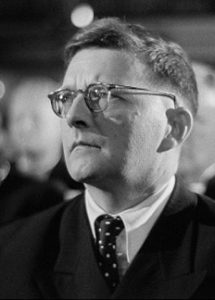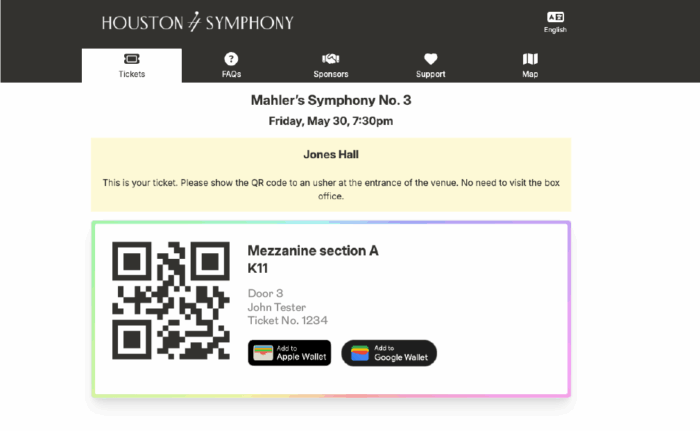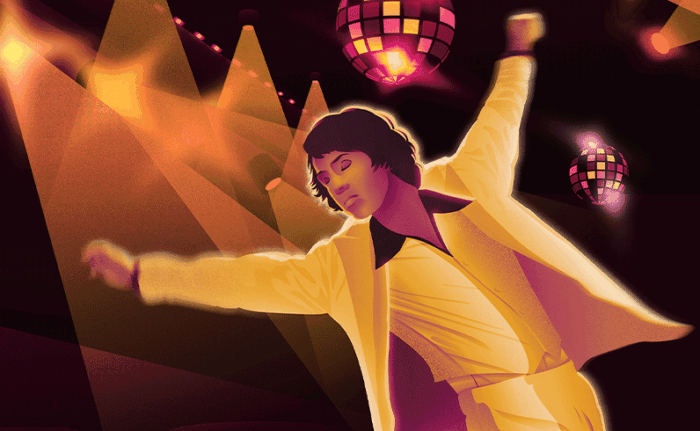On September 23, 24, and 25, The Houston Symphony presents Joshua Bell + Shostakovich 5, featuring a world premiere, superstar Joshua Bell, and Shostakovich's Symphony No. 5. In this post, learn about one of Shostakovich's many clashes with the Soviet government and how it produced this monumental symphony.
"My new composition can be called a lyrical heroic symphony. Its basic idea revolves around human suffering in which jubilant optimism hold sway. I wanted to show how optimism is affirmed as a state of mind by means of various tragic conflicts during the course of a great inner spiritual struggle." —Dmitri Shostakovich
At a young age, Shostakovich already showed great promise in becoming a showpiece of the Soviet government, with which he wanted nothing to do. With Stalin ruling the country, Soviet citizens had to watch what they said, wrote, painted, or composed for fear of being arrested, especially if it depicted the government negatively. For most of his artistic career, Shostakovich walked a thin line between staying in favor of the government while thinking for himself and composing as he pleased.
An opera in four acts following the same basic outline as the play by Nikolai Leskov, Shostakovich's Lady Macbeth of Mtsensk District premiered in 1934. Set in nineteenth-century Russia, when women had no power and were oppressed by society, the story tells how passion and free will can lead to one's downfall. Leading lady Katerina Ismailov married into a wealthy family but lives a boring life. But all this changes when she meets servant Sergei while her husband is away on business. Katerina's father-in-law catches them and immediately calls for her husband to come home. But Katerina, knowing what freedom feels like, commits a string of murders to keep her affair going and stay in good fortune. While on the run with her lover, Sergei becomes unfaithful, which sends Katerina into a jealous rage, murdering the other woman before drowning herself.
Hailed as a musical genius for the work, Shostakovich's opera had initial positive reviews, and within two years of the premiere, opera houses were already looking to stage new productions. However, in 1936, Stalin himself came to see the opera. Two days later, a review was published in the Communist Party newspaper Pravda, likely by Stalin himself or someone writing on his behalf, condemning the work and calling it a "muddle of music." Upon seeing the review, Shostakovich visited the chairman of the Arts Committee to figure out how to get back into the good graces of the government. At the time, Shostakovich was completing his Fourth Symphony but ultimately decided not to premiere it and instead set to write his Fifth Symphony.
The premiere of his Fifth Symphony was a significant turning point in the composer's artistic life as it was embraced by both the masses and the government, at least publicly, for how could they condemn someone who had just written a 50–minute tribute to the Soviet Union? Or perhaps the thunderous applause after the premiere that lasted over 30 minutes saved Shostakovich. Whether or not they realized the rebellious undertones, they were forced to ignore them.
During the Great Purge in 1937, Beethoven was one of the few composers' music to be kept, so Shostakovich modeled the first movement of his Fifth Symphony on the Beethoven sonata model but with his own twist. By the third bar of the movement, the music breaks off and retracts, ending nowhere, a pattern heard throughout the movement. The second theme can be recognized as a Soviet folk song, but with a shift. By including this folk song, Shostakovich fulfilled the wish of the government to celebrate the country. Still, the minor change suggests emotional distraught underneath. The style of the first movement is very militaristic and representative of how the country was run.
In Shostakovich's younger years, he composed some thirty film scores, of which he drew material to form the second movement. The movement is a spoof on waltzes and uses various techniques to paint a picture of the dance floor: peasants in their heavy boots, the dance master with his violin, and a squeaky wise guy. The third movement is a nod to the Russian Orthodox Church, with the opening strings representing the choir. Although openly crying was a punishable offense—it was seen as a criticism of the Soviet government—people wept during the third movement at the symphony's premiere. The symphony concludes with another march-like movement. The orchestra continues to build before a triumphant wave of sound only to run to a dead end, similar to what listeners hear in the first movement. At this point in the movement, as with most symphonies of this time, one would expect to hear a brisk march. But instead, Shostakovich embarks on a slow march with musical references to Boris Godunov, an opera in which crowds are forced to praise the Tsar. Upon completing his Symphony No. 5, Shostakovich ultimately gave the government what it wanted and saved his life for at least the next decade. –Olivia Cantrell
Hear this crashing success along with a world premiere and Sibelius's sparkling Violin Concerto on September 23, 24, and 25. Learn more and get tickets.




